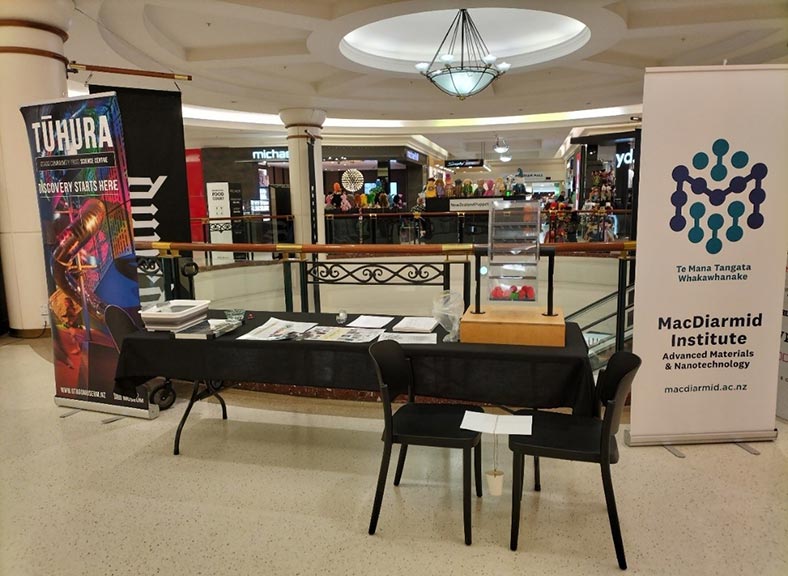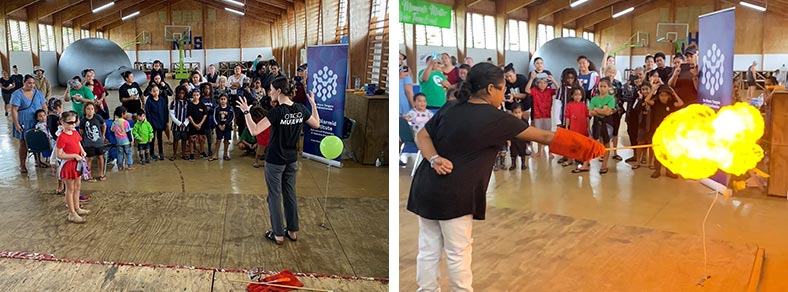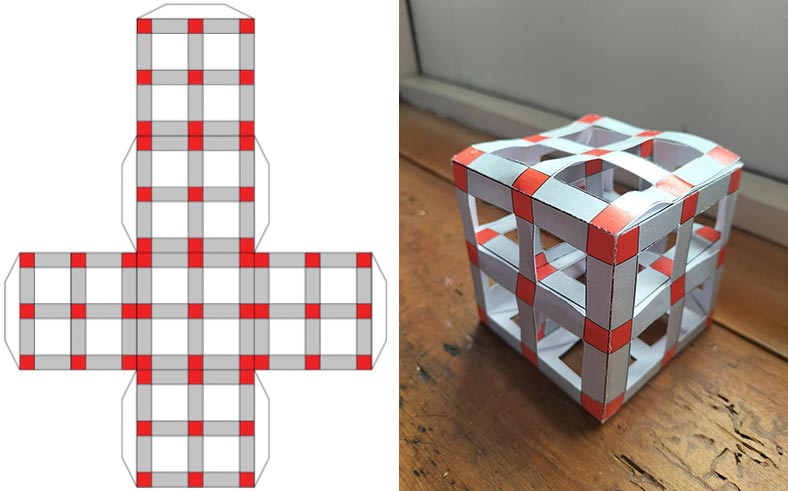Tūhura Otago Museum - Annual Report 2023
14 April, 2024
Below is a breakdown of the number of people directly engaged with outreach activities related to the MacDiarmid Institute.
Through our partnership with Tūhura Otago Museum, 522 people engaged directly with our materials science based outreach content:
| Activity | Direct engagement |
| School visits | 430 |
| NZ International Science Festival | 122 |
| Total | 552 |
The Museum also took our outreach content to wider audiences as part of their general engagement:
| Activity | General engagement |
| ASB Polyfest | 2696 |
| Niue Science Festival | 708 |
| Total | 3404 |
ASB Polyfest in Auckland, March 2023
Several members of Tūhura Otago Museum's outreach team travelled to Tāmaki Makaurau to deliver science engagement at ASB Polyfest. Most of the team's content focused on climate change in the Pacific for an Unlocking Curious Minds project titled Islands to Arks. Several of the activities were repurposed from an older science showcase, Far from Frozen II, on which the MacDiarmid Institute had been a partner. These activities focused on our current impact on the environment as well as greentech solutions being developed in Aotearoa New Zealand and the Pacific.

Left and centre: A global warming activity that uses a water balloon to demonstrate the different heat-absorption abilities of water and air, highlighting the importance of greentech solutions. Right: Road user and CO2 emissions interactive at ASB Polyfest, developed in partnership with Tūhura Otago Museum for their climate change showcase
The Future is Nano pop-up

'The Future is Nano' pop-up station during the NZ International Science Festival
Niue Science Festival, June 2023
The Tūhura Otago Museum outreach team travelled to Niue to conduct the first ever science festival held in the country. The material they brought covered the science of medicines, light and colour, star navigation, climate change and greentech. The students, parents and wider community were absolutely delighted and keenly engaged with all the festival content. One of the most popular demonstrations related to the MacDiarmid Institute was the hydrogen balloon explosion to show how hydrogen gas can be a clean alternative to petroleum.

Left: Science Engagement Co-Ordinator Anna Farrelly-Rosch preparing a crowd in Niue for a hydrogen balloon explosion - a popular demonstration on using hydrogen for clean, green energy. Right: Another hydrogen balloon demonstration at the Niue Science Festival
25 Years of Science exhibit, Meridian Mall, Dunedin
When you're spooning yoghurt on your breakfast cereal, do you ever think how the yoghurt could be related to a brain scan?
The above tag line invited viewers of the 25 Years of Science exhibit to join in the spirit of Sir Paul Callaghan and think about the world around us in ways that we perhaps haven't before. Back in the late 20th century, Sir Paul was using Magnetic Resonance Imaging (MRI) to measure the sap flow in wheat seeds, showing that you could use this technique to study living things, without having to cut up the seeds or destroy them in any way.

When you’re spooning yoghurt on your breakfast cereal, do you ever think how the yoghurt could be related to a brain scan?
While an established tool, MRI in its current form was not suitable to study soft matter. Indeed, sometimes the current tools you have aren't quite right for the problem you're trying to solve so Sir Paul improved the Nuclear Magnetic Resonance (NMR) and MRI technologies along the way. With each experiment, he adapted the technology to the need, pushing the boundaries of NMR and MRI techniques, coming up with solutions that support the technology we know and use today.
We hope that some of this spirit rubbed off on viewers of the 25 Years of Science exhibit and we look forward to the future of technology and the innovative solutions that will be provided by the next generation.
Developing new take-home craft activities
Dr Marijn Kouwenhoven has been developing a new crafty activity, like the Buckyball sheets, focused on metal-organic frameworks (MOFs). Although this activity is still in its prototype stage, there are plans for early next year to develop the template further so it can be manufactured professionally.

Left: Initial mock-up of templates for paper MOF model. Right: First attempt at assembling paper template


